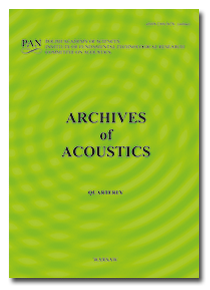Study of the ae frequency spectra of some rocks
It was found that for nonhomogeneous rocks i.e. sandstone and dolomite the dominant frequency bands shifted towards higher frequencies with the increase of load. Prior to failure of these samples, the increase of low frequency components was observed. For the marble (carrare) which has more homogeneous structure the spectra were less differentiated and their evolution less pronounced.
The results obtained support the hypothesis of stress concentration on limits of the defects in regions of eventual failure planes. The observed increase of low frequency components could be used in practice in the prediction of failure of heterogeneous rocks.
References
Y. P. CHUGH, H. R. HARDY, Jr., R. STEFANKO, An investigation of the frequency spectra of microseismic activity in rock under tension, Tenth Rock Mech. Sym. Austin, Texas, 1968, p. 79-113.
S. A. FEDOTOW, A. A. GUSEW, S. A. BOLDYREW, Progress of earthquake prediction in Kamchatka, Tectonophysics, 14, 279-286 (1972).
R. HOUPERT, F. HOMAND-ETIENNE, J. P. TISOT, Mecanismes de propagation de la rupture en compression dans les roches cristallines, Bull. Soc. Geol. France, 28. 6. 1583-1589 (1976).
M. ISHIDA, H. KANAMORI, Temporal variation of seismicity and spectrum of small earthquakes preceding the 1952 Kern County, California, earthquake, Bull. Seism. Soc. Am., 70, 2, 509-527 (1980).
D. LOUCKNER, J. BYERLEE, Acoustic emission and fault formation in rocks, Proc. First Conf. on A.E./M.A in Geologic Structures and Materials, The Pennsylvania State University, Trans. Tech. Publ., 1977, p. 13.





